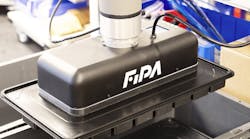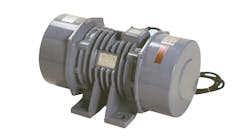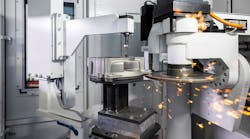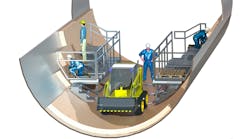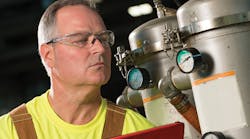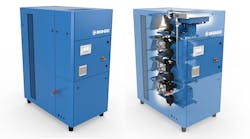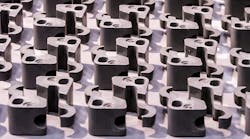Recently, Linde LLC introduced the Sinterflex® Atmosphere Control System (ACS) for carbon control in sintering of metal injection-molded (MIM) parts. The developer claims the process effectively doubles the number of parts “in-spec, resulting in significant improvements in quality, productivity, and profitability.”
The powder metal process combines the precision shape-forming advantages of plastic-injection molding with the strength and durability of metals. The final step in MIM is sintering, the high-temperature hardening process that fuses the high-density alloyed powders by applying heat below the melting point in a controlled atmosphere. By establishing a carbon-neutral atmosphere during sintering, MIM parts avoid decarburization, a frequent problem that prevents the carbon content from being in specification.
With high-accuracy carbon control, Sinterflex ACS reportedly will:
• Increase productivity by improving the number of in-spec parts, reduce scrap and rework, faster startup;
• Improve quality by making carbon content consistent; minimizing destructive parts testing; allowing remote monitoring and control, data logging and tracking of process parameters; and enabling sintering of highly alloyed powders (Cr);
• Reduce operating costs by reducing material costs (less scrap); cutting the need for post treatment; optimizing N2/H2 atmosphere; troubleshooting process problems; and supporting continuous improvement programs.
MIM offers an alternative to CNC machining, casting, and additive manufacturing processes, and can produce high-quality parts in volume, as well as for low-volume prototyping. The ability to produce complex shapes with superior strength and excellent surface finish make it an attractive approach for many parts used in medical devices, electronics, tooling, machinery, and aerospace and automotive components.
Learn more at www.lindeus.com
